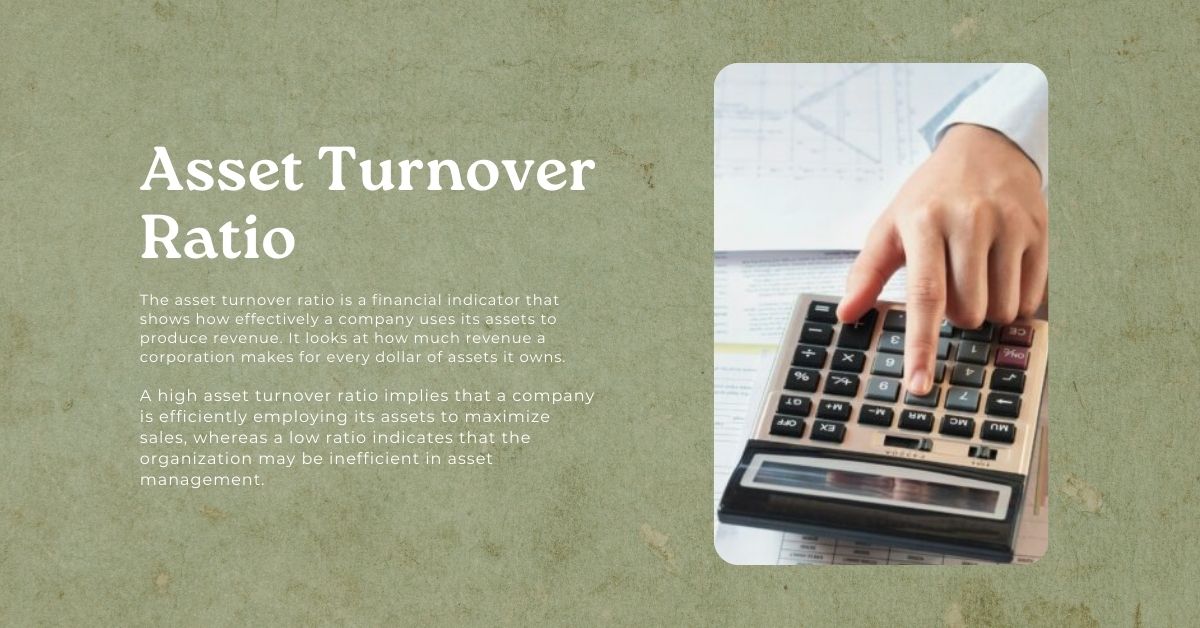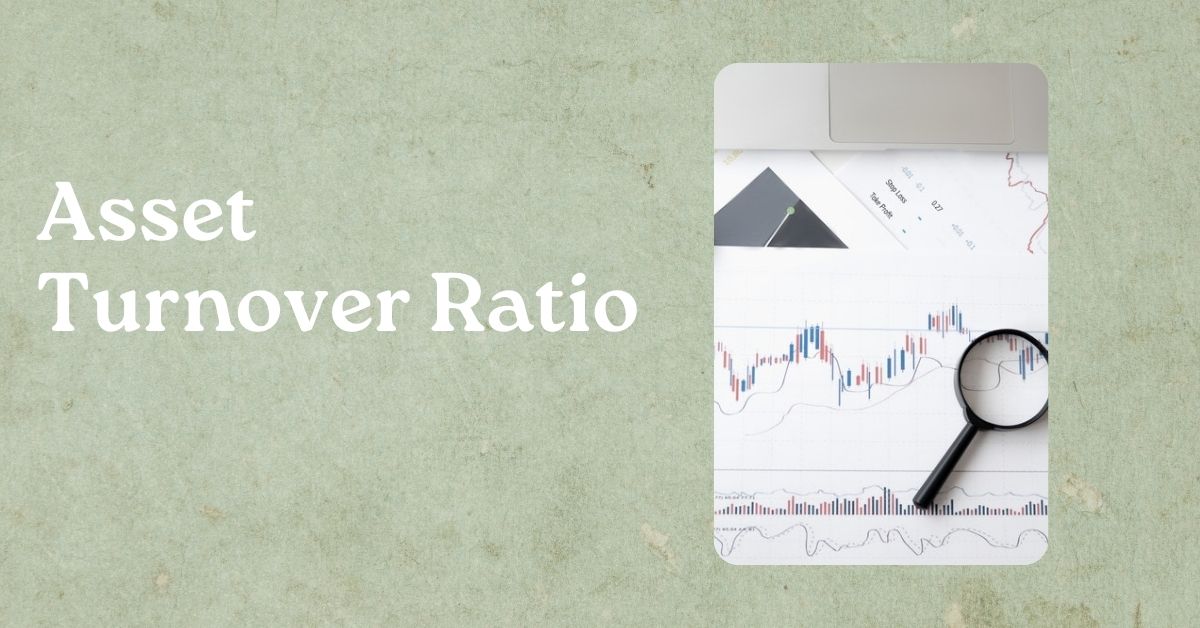The asset turnover ratio gives useful information about how efficiently a company uses its assets to produce revenue. Therefore, understanding and interpreting this ratio is critical for students interested in corporate finance. This article will look at the asset turnover ratio, including how it’s calculated, interpreted, and used in financial research.
What is Asset Turnover Ratio?

The asset turnover ratio is a financial indicator that shows how effectively a company uses its assets to produce revenue. It looks at how much revenue a corporation makes for every dollar of assets it owns.
A high asset turnover ratio implies that a company is efficiently employing its assets to maximize sales, whereas a low ratio indicates that the organization may be inefficient in asset management.
Asset Turnover Ratio Formula
Asset Turnover Ratio = Net Sales Revenue / Average Total Assets
Where:
- Net Sales Revenue is the sum of a company’s sales activities minus any returns, discounts, or allowances.
- Average Total Assets: The average value of a company’s total assets over a specific period, typically a year. This is calculated by adding the beginning and ending total assets for the period and dividing by 2.
Types of Asset Turnover Ratios
The asset turnover ratio has various forms, each of which focuses on a different sort of asset:
- Total Asset Turnover: This is the most popular form, which assesses the effectiveness of all a company’s assets in generating income.
- Fixed Asset Turnover: This ratio assesses the effectiveness of a company’s property, plant, and equipment (PP&E) in generating income.
- Inventory Turnover: This ratio indicates how rapidly a company sells its inventory in comparison to the average inventory level.
- Accounts Receivable Turnover: This ratio indicates how rapidly a company collects payments from clients.
Each of these ratios gives useful information about a company’s asset management efficiency, but they should be examined collectively to gain a full view of the company’s overall performance.
Benifits and Limitations of Asset Turnover Ratios
| Benefit | Limitation |
| Efficiency Assessment: Measures how effectively a company uses its assets to generate revenue. | Industry-Specific Differences: ratios can vary significantly across industries, making comparisons difficult. |
| Profitability Analysis: Can be used in conjunction with other financial ratios to assess profitability. | Seasonal Fluctuations: Seasonal variations in sales or asset usage can distort them. |
| Comparative Analysis: Allows for comparison with industry benchmarks and competitors. | Intangible Asset Neglect: May not fully capture the value of intangible assets. |
| Early Warning Sign: Can identify potential problems with asset management before they become more serious. | Short-term fluctuations: Affected by sudden changes in assets or sales levels. |
| Financial Leverage Impact: A company’s financial leverage may have an impact. | Company-Specific Factors: Other factors besides asset utilization can influence ratios. |
Who Uses the Asset Turnover Ratio?
A wide range of stakeholders employ asset turnover ratios, including
- Investors use asset turnover ratios to determine how efficiently a company uses its assets to produce income. A high ratio indicates that the organization is properly managing its resources, whereas a low ratio could imply inefficiency.
- Creditors use asset turnover ratios to assess a company’s ability to repay loans. A high ratio indicates that the corporation can produce enough cash flow to meet its debt obligations.
- Managers use asset turnover ratios to identify areas where the business can cut costs and increase efficiency. Companies that increase asset rotation can produce more revenue with the same number of assets.
- Analysts use asset turnover ratios to analyze companies in a given industry and find possible investments.
- Regulators may use asset turnover ratios to analyze the financial health of corporations in industries they oversee.
How Can a Company Improve its Asset Turnover Ratio?
A company can increase its asset turnover ratio by:
- Increasing sales allows the corporation to produce more income from its existing assets. This might be accomplished through marketing initiatives, product innovation, or expansion into new markets.
- Reducing excess inventory: By effectively controlling inventory levels, businesses can avoid locking up capital in unsold goods. Better demand forecasting, just-in-time inventory management, and efficient supply chain management can accomplish this.
- Optimizing asset utilization: Companies can increase asset turnover by identifying and deleting unused assets. This could include selling off superfluous assets, leasing equipment rather than purchasing it, or streamlining activities.
- Improving accounts receivable collection: By collecting payments from customers more quickly, businesses can lower the amount of capital held in outstanding receivables. This can be accomplished through strong credit regulations, efficient billing systems, and aggressive collection operations.
- Selling underperforming assets: If a company’s assets aren’t producing enough profits, it may be wise to sell them and reinvest the revenues in more productive assets.
Want to know more about other financial ratios? You can also read these articles:
- What is Quick Ratio? Understanding How It Differs from Current Ratio
- What is Interest Coverage Ratio? Measuring a Company’s Ability to Service Debt
What is a Good Total Asset Turnover Ratio?
A healthy total asset turnover ratio varies by industry and business style. However, as a general rule, a ratio of 1.5 or more is considered outstanding or excellent, suggesting that the organization is efficiently generating revenue from its assets.
A greater asset turnover ratio indicates that the organization
- Efficient asset management: The corporation makes the best use of its assets to maximize revenue.
- Minimizing waste: The company is lowering needless asset-related costs.
- Effective product pricing: The company sets prices that allow it to produce a reasonable profit margin while maintaining a high asset turnover.
However, an extremely high asset turnover ratio may suggest that the organization is taking too many risks or cutting costs in its operations. As a result, it is critical to examine the asset turnover ratio alongside other financial measures and take into account the specific context of the company’s operations.

